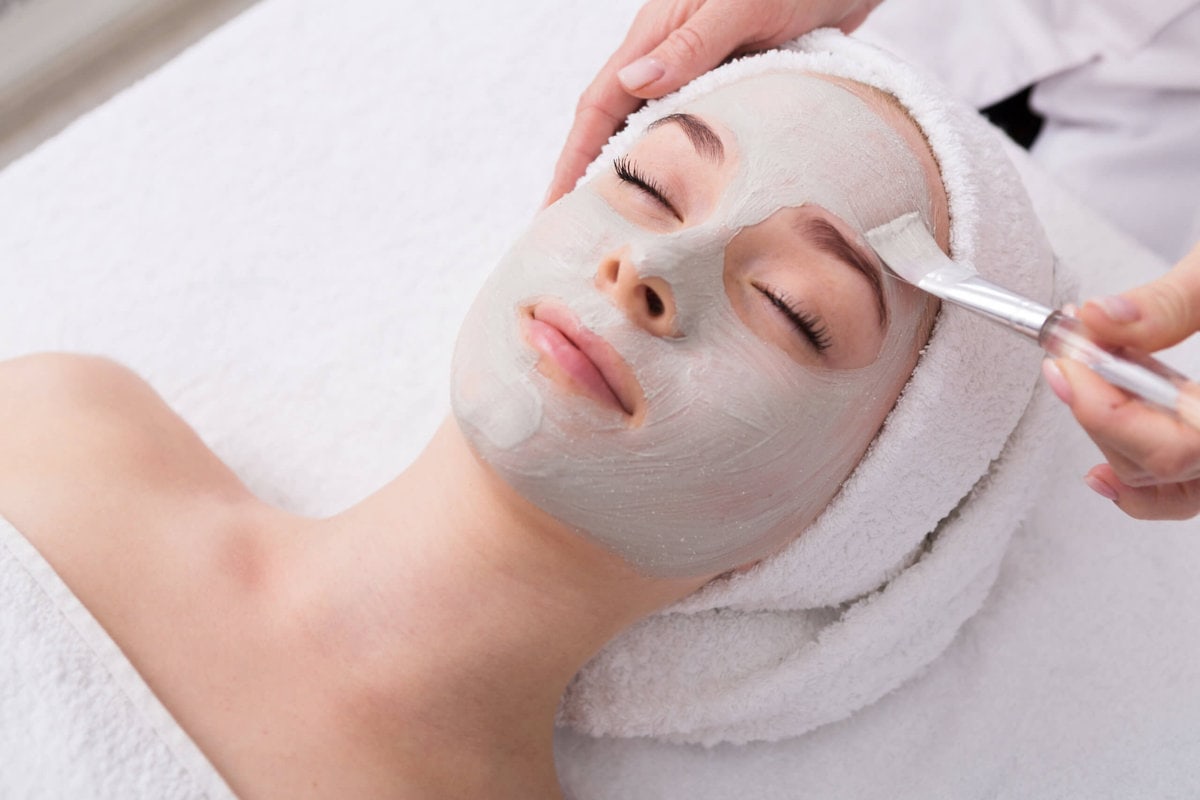Chemical peels have become an effective cosmetic treatment for rejuvenating the skin and improving various skin conditions. However, concerns regarding potential long-term skin damage associated with chemical peels have sparked debates and fueled misinformation.
In this article, we will explore the truth behind these claims and provide a comprehensive understanding of the benefits and effects of chemical peels on the skin.
What are Chemical Peels?
Chemical peel is a general classification for several skin treatments that chemically exfoliate and rejuvenate the skin. Through exfoliation, chemical peels are often used to reduce the unwanted appearance of fine lines and wrinkles, lighten undesirable dark spots for a more even skin tone, and smooth and soften the skin’s texture. Peels are also helpful in opening clogged pores for patients with oil or acne-prone skin.
Fair-skinned individuals and light-haired patients are generally the ideal candidates for chemical peels. Though chemical peels can be performed on individuals with darker skin, there is a potential risk of uneven skin tone post-procedure. Generally, chemical peels are divided into light, medium, and deep peels.
Chemical peels can also treat a variety of skin conditions, including
- Acne
- Mild scarring
- Wrinkles and fine lines
- Age and brown spots
- Freckles
- Redness
- Rosacea
- Hyperpigmentation
How Chemical Peels Work
As a popular cosmetic procedure, chemical peels are used to enhance the appearance of the skin, treating various skin conditions, including long-term skin damage. These peels work by applying chemical solutions to the skin, which causes controlled injury to the top layers of the skin. This damage triggers the skin’s natural healing process, leading to the growth of new, healthier skin cells and the removal of damaged skin layers.
Primarily, the purpose of a chemical peel is to exfoliate and rejuvenate the skin. Long-term skin damage can occur due to aging, sun exposure, acne, scarring, and pigmentation. These unwanted factors can accumulate dead skin cells, uneven skin tone, fine lines, wrinkles, and other imperfections.
When chemical peels are applied to the skin, they remove the outermost layers of damaged skin cells. The chemical solution used in the peel typically contains one or more acids, such as alpha hydroxy acids (AHAs), beta hydroxy acids (BHAs), or trichloroacetic acid (TCA). The specific type and concentration of the chemical solution are chosen based on the individual’s skin type and the desired results.
The chemical solution is carefully applied to the skin and left on for a specific duration, greatly based on the depth of the peel and the desired outcome. During this time, the solution causes controlled damage to the skin’s surface layers. The damaged skin cells are shed off, revealing fresh, new skin underneath.
Chemical peels can be classified into three main types: superficial, medium, and deep peels. Superficial peels, also known as light peels, primarily target the outermost layer of the skin (epidermis). They are milder and generally use AHAs, such as glycolic or lactic acid. Superficial peels effectively treat minor skin damage, such as sunspots, uneven skin tone, and mild acne scars.
Medium peels penetrate deeper into the skin, reaching the middle layer (dermis). They are typically performed using TCA or a combination of TCA and other acids. Medium peels treat moderate skin damage, including deeper wrinkles, more pronounced pigmentation issues, and acne scars.
Deep peels are the most potent and aggressive type of chemical peel and target the deepest layers of the skin. They use an intense concentration of TCA or phenol to treat severe skin damage, such as deep wrinkles, significant sun damage, and prominent acne scars. Deep peels require a longer recovery time and are typically performed under the supervision of experts, such as dermatologists.
Regardless of the depth of the peel, the controlled damage caused by the chemical solution triggers the skin’s healing response. This response stimulates collagen production, a protein that provides structure and elasticity to the skin. Increased collagen production helps to improve skin texture, reduce the unwanted appearance of wrinkles and fine lines, and promote a more youthful and radiant complexion.
Understanding Chemical Peels
Naturally, chemical peels involve the application of a chemical solution to the skin, which causes controlled exfoliation and removal of damaged outer layers. This skin treatment process stimulates the growth of new skin cells. As a result, the treated skin will have a smoother and more youthful complexion. Chemical peels can be classified into three main types: superficial, medium, and deep, depending on the penetration depth into the skin layers.
The Safety of Chemical Peels
Contrary to the misconception that chemical peels cause long-term skin damage when performed by a trained professional and following appropriate guidelines, they are generally considered safe. The actual work lies in understanding the importance of proper skin assessment, correct choice of peel strength, and adequate post-treatment care.
Temporary Side Effects
Chemical peels can lead to some temporary side effects, generally mild and resolve within a few days to weeks. These may include redness, flaking, dryness, and increased sensitivity to the sun. However, these side effects should not be mistaken as long-term skin damage. Adhering to post-treatment instructions and practicing sun protection can minimize these effects.
Benefits of Chemical Peels
Chemical peels offer a wide range of benefits for various skin concerns. These peels can improve the undesirable appearance of fine lines and wrinkles. Eventually, it reduces acne and acne scars, diminishes hyperpigmentation and sunspots, and enhances overall skin texture and tone. These positive outcomes result from stimulating collagen production, enhancing cell turnover, and promoting the growth of healthier skin.
Long-Term Skin Health
Contrary to the belief that chemical peels compromise long-term skin health, scientific evidence suggests the opposite. Regularly scheduled, correctly performed chemical peels can promote long-term skin health by encouraging the development of new, rejuvenated skin cells. They can help maintain a youthful appearance, reduce the risk of certain skin conditions, and improve overall skin quality.
Risk Factors and Precautions
While chemical peels are generally safe, certain risk factors and precautions should be considered. People with specific skin conditions, such as eczema or rosacea, or those who are pregnant or breastfeeding may need to avoid or postpone chemical peels. It is crucial to consult a qualified dermatologist or skincare professional to evaluate individual suitability and ensure optimal results.
Professional Guidance and Expertise
To ensure you have the safest and most effective outcome, seeking professional guidance for chemical peels is essential. Trained professionals possess the expertise and knowledge to determine the appropriate peel strength, tailor the treatment to individual needs, and provide comprehensive post-treatment care instructions. Following their recommendations will minimize the risk of complications and maximize the procedure’s benefits.
Final Thoughts on Chemical Peels
Contrary to popular misconceptions, chemical peels do not cause long-term skin damage when performed correctly and by a trained professional. They can offer numerous benefits for skin concerns and contribute to long-term health. By understanding the process, adhering to proper protocols, and seeking professional guidance, individuals can confidently enjoy the positive effects of chemical peels, leading to a more radiant and youthful complexion.









